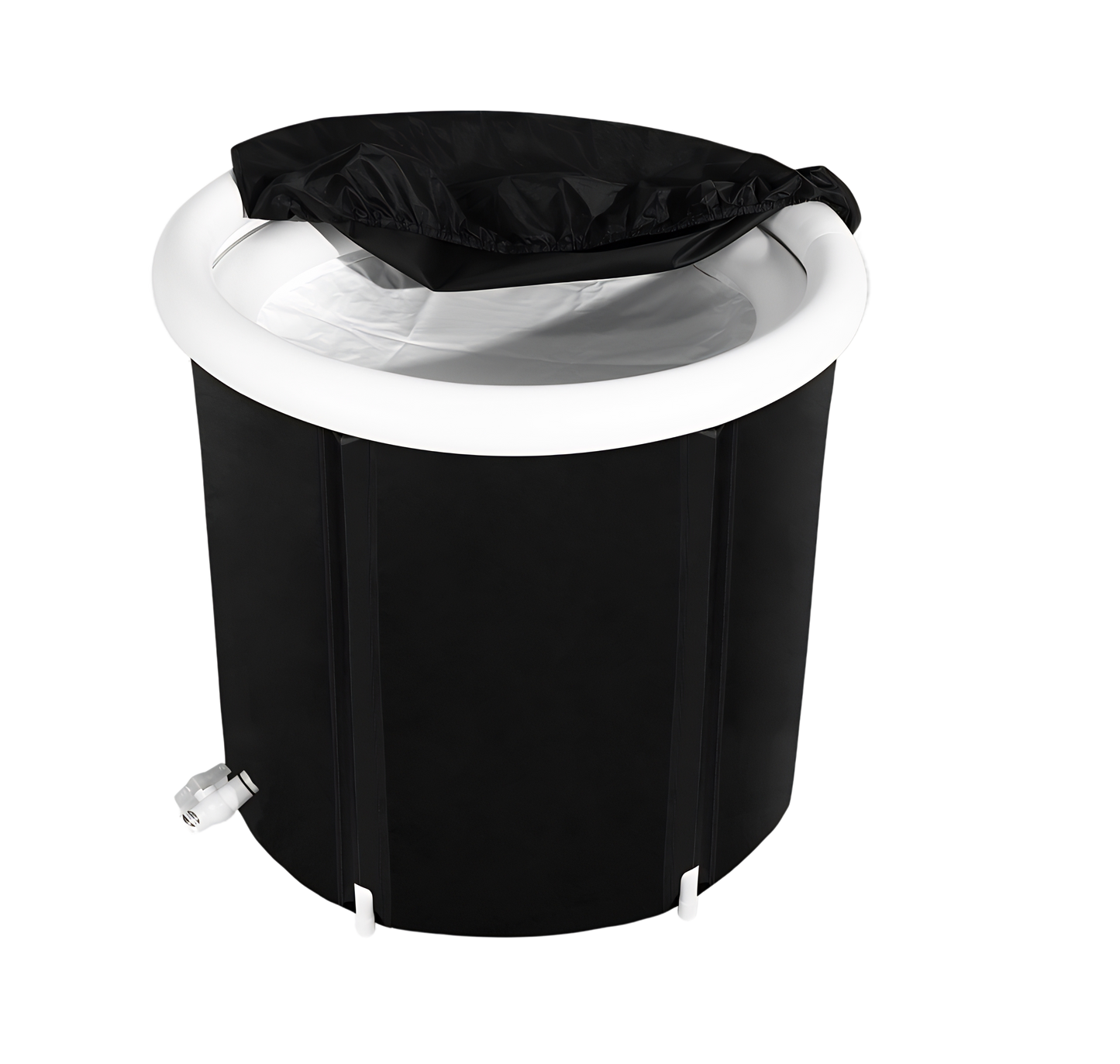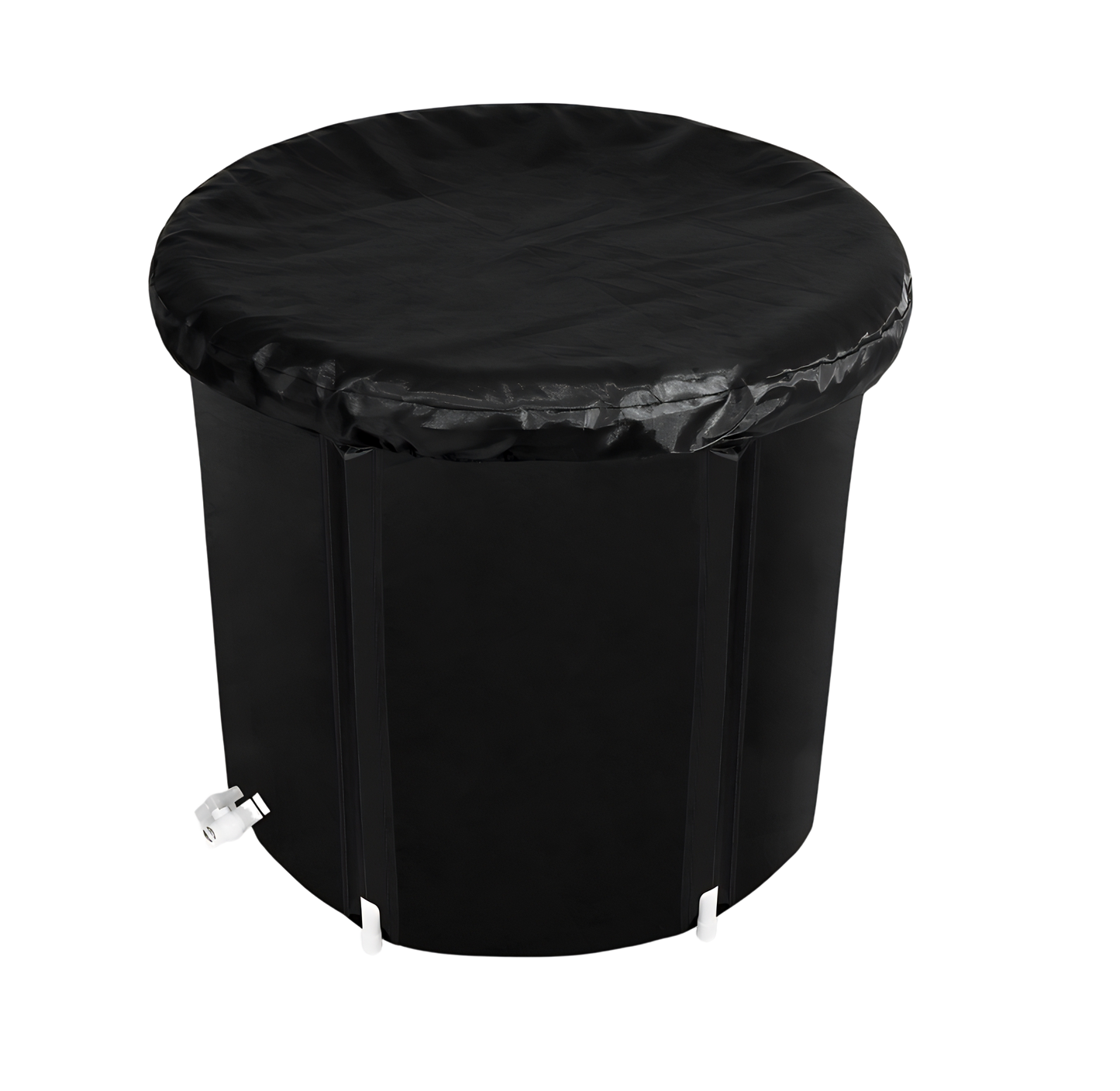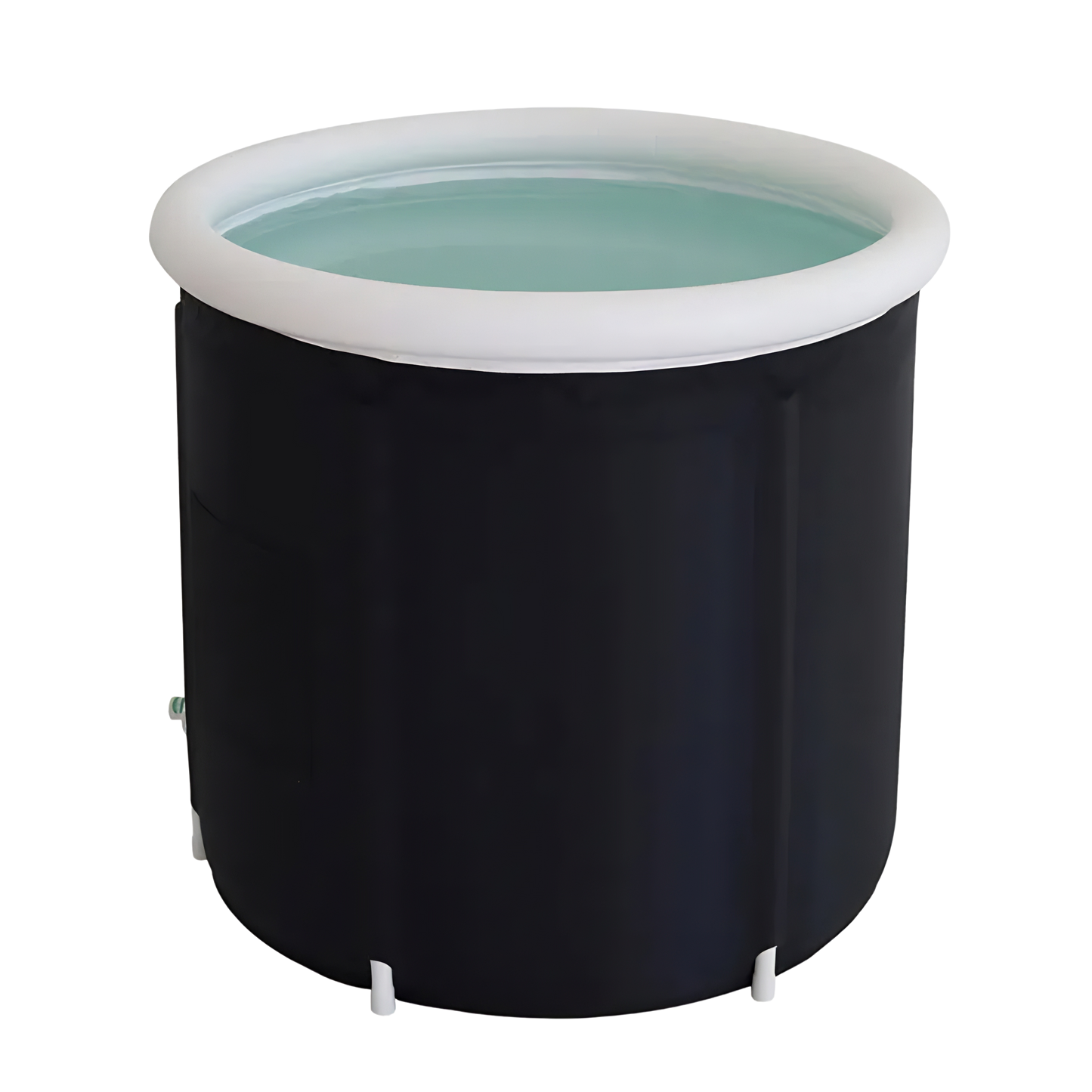Ice baths, also known as cold therapy or hydrotherapy, have gained popularity as a recovery technique among athletes. They involve immersing the body in cold water for a certain duration to reap various benefits. Research suggests that ice baths can aid in temperature regulation, reduce muscle soreness, and decrease inflammation. They have also been found to enhance athletic performance and contribute to post-workout recovery. The effects of ice baths on the body's physiological responses, such as changes in core temperature and blood circulation, have been extensively studied.
Key Takeaways:
- Ice baths provide a method for athletes to regulate their body temperature.
- Cold therapy can reduce muscle soreness and inflammation.
- Athletic performance and post-workout recovery can be enhanced through ice baths.
- Physiological responses to ice baths, such as core temperature changes and improved blood circulation, have been extensively researched.
- Proper safety precautions and individual considerations should be taken when engaging in ice bath therapy.
The Science Behind Ice Baths and Temperature Regulation

Ice baths are not just a cold plunge; they have a profound impact on the body's temperature regulation mechanisms. When exposed to cold water, the body initiates various physiological responses to maintain homeostasis. Studies have shown that immersion in cold water leads to vasoconstriction, which reduces the diameter of blood vessels, and redirects blood flow from the extremities to the core, preserving core temperature. This redirection of blood flow helps to minimize heat loss and ensure the body's internal temperature remains stable.
The hypothalamus, the body's thermoregulatory center, plays a crucial role in coordinating these responses. It receives signals from temperature receptors throughout the body, triggering vasoconstriction and other adjustments to maintain thermal balance. Additionally, cold exposure activates brown fat (Espeland et al., 2022), a specialized type of fat that generates heat. This activation contributes to temperature regulation by increasing energy expenditure and producing warmth within the body.
Understanding the science behind ice baths and temperature regulation can help us appreciate their benefits in sports recovery and beyond. By manipulating blood flow, vasoconstriction, and brown fat activation, ice baths can aid in maintaining a stable core temperature and supporting the body's natural processes of healing and recovery.
The Impact of Ice Baths on Blood Circulation
Ice baths not only affect temperature regulation but also have a significant impact on blood circulation. When exposed to cold water, the body initially experiences vasoconstriction, where blood vessels narrow to reduce blood flow. However, this is followed by vasodilation, where blood vessels expand, leading to improved circulation. This enhanced blood flow delivers oxygen and nutrients to the muscles and tissues, helping to accelerate recovery and reduce muscle soreness.
Furthermore, the improved circulation resulting from ice baths aids in the removal of metabolic waste products, such as lactic acid, from the muscles. This removal of waste products and reduction in inflammation can contribute to faster recovery and enhanced athletic performance.
Overall, ice baths have a multi-faceted impact on the body, influencing temperature regulation, physiological responses, and blood circulation. Understanding the science behind these effects can help individuals optimize their use of ice baths for recovery, performance, and overall well-being.
The Impact of Ice Baths on Circulation and Recovery
Ice baths have been found to improve blood circulation, particularly in the microcirculatory system. Cold exposure causes vasoconstriction initially, followed by vasodilation, resulting in improved blood flow to the muscles and tissues. This enhanced circulation can aid in recovery by reducing inflammation, accelerating the removal of metabolic waste products, and promoting the delivery of oxygen and nutrients to the tissues. Ice baths have also been associated with a reduction in muscle soreness and improved recovery after intense exercise or training sessions.
The effects of ice baths on circulation and recovery are supported by research. In a study published in the Journal of Sports Science and Medicine, participants who underwent ice bath therapy experienced faster clearance of lactate, a byproduct of anaerobic metabolism, indicating enhanced recovery and reduced muscle fatigue. Another study conducted by the University of Edinburgh found that cold water immersion improved blood flow and increased heat exchange, facilitating the recovery process.
In addition to improving circulation, ice baths also have benefits for injury recovery. According to physiotherapist Rachel Kilius, "Cold water immersion can have analgesic effects, reducing pain and inflammation in injured tissues." This can be particularly helpful for athletes recovering from sprains, strains, or overuse injuries.
While ice baths can be an effective tool for promoting circulation and recovery, it's important to use them correctly and consider individual differences. Each person may have different tolerances to cold temperatures and varying recovery needs. Consulting with a healthcare professional or sports therapist is recommended to determine the most suitable ice bath protocol for individual needs. It's also crucial to follow safety precautions, such as monitoring core temperature and acclimating gradually to the cold temperature, to prevent any adverse reactions.
| Benefits of Ice Baths on Circulation and Recovery | Scientific Evidence |
|---|---|
| Improved blood flow to muscles and tissues | Study published in the Journal of Sports Science and Medicine |
| Accelerated removal of metabolic waste products | University of Edinburgh study |
| Reduced muscle soreness | Physiotherapist Rachel Kilius |
| Enhanced recovery after intense exercise or training | Physiotherapist Rachel Kilius |
The Effects of Ice Baths on Metabolic Responses
Ice baths have been found to have significant metabolic effects on the body, influencing energy expenditure and contributing to various physiological responses. One of the key metabolic responses to ice baths is the activation of brown fat. Brown fat is a specialized type of fat that generates heat through thermogenesis, resulting in increased energy expenditure. This activation of brown fat can help individuals burn calories and may have potential benefits for weight management and metabolic health.
In addition to brown fat activation, ice baths can also impact hormonal responses. Cold exposure during an ice bath has been shown to increase cortisol and catecholamines levels. Cortisol is a hormone that plays a role in energy mobilization, while catecholamines, including adrenaline and noradrenaline, can enhance the process of thermogenesis. These hormonal responses contribute to the body's energy regulation and may have implications for athletic performance and recovery.
When considering the metabolic effects of ice baths, it's important to note that individual responses may vary. Factors such as age, body composition, and fitness level can influence how the body responds to cold exposure. Additionally, the duration and frequency of ice bath sessions can also impact the metabolic outcomes. Consulting with a healthcare professional or sports therapist can help determine the most suitable ice bath protocol for individual needs and goals.
| Metabolic Response | Effect |
|---|---|
| Brown Fat Activation | Increased energy expenditure through thermogenesis |
| Hormonal Responses | Increase in cortisol and catecholamines levels |
| Individual Variability | Responses influenced by factors such as age, body composition, and fitness level |
*Note: The table above provides a summary of the metabolic responses to ice baths. Individual experiences may vary.
Considerations and Best Practices for Ice Bath Therapy
Ice bath therapy can be an effective recovery technique when performed correctly and with proper consideration for safety and best practices. Here are some key factors to keep in mind:
- Temperature: The recommended temperature for ice baths typically ranges from 10°C to 15°C. This temperature range provides the desired cooling effect without excessively high or low temperatures.
- Duration: The duration of an ice bath session can vary depending on individual preferences and needs. Generally, a session lasting between 5 to 20 minutes is considered suitable. Remember that longer durations may not necessarily result in greater benefits and may increase the risk of cold-induced injuries.
- Gradual Acclimation: It is crucial to gradually acclimate your body to the cold temperature of the ice bath. Start with shorter durations and lower temperatures, increasing them gradually over time. This approach helps prevent shock and allows your body to adapt to the cold exposure more effectively.
- Safety Precautions: When engaging in ice bath therapy, it is important to prioritize safety. Monitor your core temperature throughout the session using a reliable thermometer to avoid prolonged exposure to excessively low temperatures. Wear appropriate clothing to minimize heat loss and protect your extremities. Additionally, make sure to have proper supervision, especially if you are new to ice bath therapy or have any underlying health conditions.
It is always wise to consult with a healthcare professional or sports therapist before incorporating ice bath therapy into your routine. They can provide personalized guidance and recommend the most suitable ice bath protocol based on your individual needs and circumstances.

Conclusion
Ice baths, also known as cold therapy or hydrotherapy, are a valuable tool for temperature regulation and recovery. Extensive research has shown that immersing the body in cold water can modulate physiological responses, improve circulation, reduce muscle soreness, and promote overall recovery after intense physical activity.
By carefully following best practices, individuals can harness the benefits of ice baths. It is crucial to maintain a recommended temperature between 10°C to 15°C and adjust the duration between 5 to 20 minutes. Gradually acclimating the body to the cold temperature is essential to prevent shock and ensure safety.
Ice baths have proven to be effective in supporting the body's recovery process. However, it is important to consider individual differences and consult with a healthcare professional or sports therapist to determine the most suitable ice bath protocol for your needs.
Whether you're an athlete aiming for performance enhancement or an individual seeking post-workout recovery, ice baths can provide the desired effects. When utilized correctly and safely, ice baths offer a powerful way to regulate body temperature, reduce muscle soreness, and promote overall well-being.
FAQ
What are ice baths?
Ice baths, also known as cold therapy or hydrotherapy, involve immersing the body in cold water for a certain duration to reap various benefits.
What are the benefits of ice baths?
Ice baths can aid in temperature regulation, reduce muscle soreness, decrease inflammation, enhance athletic performance, and contribute to post-workout recovery.
How do ice baths impact the body's temperature regulation mechanism?
Ice baths initiate physiological responses that include vasoconstriction, redirection of blood flow, and activation of brown fat to regulate and maintain core temperature.
How do ice baths improve blood circulation?
Cold exposure in ice baths initially causes vasoconstriction, followed by vasodilation, which improves blood flow to the muscles and tissues, aiding in recovery.
Read More: Ice Baths and Heart Health.
Do ice baths have any metabolic effects on the body?
Yes, ice baths stimulate the activation of brown fat, increase energy expenditure through thermogenesis, and affect hormonal responses related to energy mobilization.
Read More: Ice Baths Metabolic Effects.
What factors should be considered when engaging in ice bath therapy?
It is important to consider factors such as temperature, duration, gradual acclimation, safety precautions, proper clothing, and supervision to ensure safety and maximize benefits.
Are ice baths suitable for everyone?
It is recommended to consult with a healthcare professional or sports therapist to determine the most suitable ice bath protocol based on individual needs.






